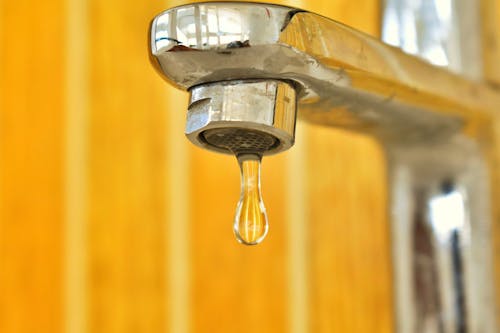A well-maintained water tap not only enhances the aesthetics of your kitchen or bathroom but also ensures efficient water flow and prevents costly repairs. Whether you’ve just installed a new faucet or want to prolong the lifespan of your existing one, proper maintenance is key. In this blog post, we will explore essential maintenance tips to keep your water tap in tip-top condition, ensuring smooth operation and optimal performance for years to come.
- Regular Cleaning:
- Regular cleaning is crucial to prevent mineral buildup, dirt, and grime from affecting the appearance and functionality of your water tap.
- Use a mild detergent or dish soap and warm water to clean the exterior surfaces of the faucet, including the handles, spout, and aerator.
- For stubborn stains or mineral deposits, a solution of vinegar and water can be effective. Soak a cloth or sponge in the solution and gently scrub the affected areas, then rinse thoroughly with water.
- Clean and Replace Aerators:
- The aerator is a small mesh screen located at the tip of the faucet spout, which helps regulate water flow and reduce splashing.
- Remove the aerator periodically and clean it thoroughly to remove any debris or mineral buildup that may be affecting water flow.
- If the aerator is damaged or heavily clogged, consider replacing it with a new one to restore optimal water flow and pressure.
- Check for Leaks:
- Regularly inspect your water tap for leaks, as even small leaks can waste significant amounts of water and lead to higher utility bills.
- Check for leaks around the base of the faucet, under the sink, and around the handles. If you notice any signs of leaking, such as water pooling or dripping, take prompt action to address the issue.
- Lubricate Moving Parts:
- Moving parts such as handles and valves can become stiff or difficult to operate over time due to mineral buildup or wear and tear.
- Apply a small amount of plumber’s grease or silicone-based lubricant to lubricate these moving parts and ensure smooth operation.
- Be sure to follow the manufacturer’s recommendations and avoid using petroleum-based lubricants, as they can degrade certain faucet components.
- Prevent Hard Water Damage:
- Hard water, which contains high levels of minerals such as calcium and magnesium, can cause mineral deposits to accumulate inside your water tap.
- Install a water softener or filtration system to reduce the hardness of your water and prevent mineral buildup in your faucet and plumbing fixtures.
- Consider using a vinegar solution or commercial descaling agent periodically to remove mineral deposits from your water tap and restore optimal performance.
- Protect the Finish:
- The finish of your water tap can become dull or damaged over time due to exposure to moisture, chemicals, and abrasive cleaning agents.
- Avoid using harsh chemicals or abrasive cleaners on your faucet, as they can strip away the finish and cause discoloration or corrosion.
- Use a soft cloth or sponge and mild detergent to clean the faucet, and dry it thoroughly after cleaning to prevent water spots and mineral buildup.

- Address Dripping Faucets Promptly:
- A dripping faucet not only wastes water but can also indicate underlying issues with the faucet’s components, such as worn-out washers or seals.
- If you notice your faucet dripping, take prompt action to identify and address the cause of the leak to prevent further damage and water waste.
- In some cases, a dripping faucet may require professional repair or replacement of internal components to restore proper functionality.
- Temperature Regulation:
- Pay attention to how your water tap handles hot and cold water. If you notice any irregularities, such as inconsistent temperature control or sudden changes in water temperature, it could indicate a problem with the faucet’s cartridge or mixing valve.
- Periodically check the temperature regulation of your faucet by running both hot and cold water and adjusting the handles to ensure smooth and consistent temperature control.
- If you experience issues with temperature regulation, consider contacting a plumber to inspect and potentially replace faulty components to restore proper functionality.
- Preventing Corrosion:
- Corrosion can occur on the surface of metal faucets, especially in humid or coastal environments where exposure to salt air can accelerate the corrosion process.
- To prevent corrosion, regularly clean and dry your faucet to remove moisture and prevent the accumulation of corrosive substances.
- Consider applying a protective coating or sealant specifically designed for metal surfaces to provide an additional layer of protection against corrosion.
- Addressing Hard-to-Reach Areas:
- Some parts of your water tap, such as the underside of the spout or the area behind the handles, may be difficult to reach and clean.
- Use a small brush, such as a toothbrush or pipe cleaner, to clean these hard-to-reach areas and remove any dirt or debris that may be hiding there.
- Consider using a cleaning solution with a long nozzle or sprayer to reach inaccessible areas and ensure thorough cleaning of all parts of your faucet.
- Regular Inspections:
- Schedule regular inspections of your water tap to identify any signs of wear, damage, or deterioration before they escalate into more significant issues.
- Check for loose or wobbly handles, leaking connections, corroded surfaces, or any unusual sounds or odors coming from the faucet.
- Address any issues promptly to prevent further damage and ensure the continued functionality and safety of your water tap.
- Educating Household Members:
- Educate household members about proper water tap maintenance and encourage them to follow the recommended maintenance practices.
- Provide guidance on how to use the faucet correctly, such as avoiding excessive force when turning the handles and being mindful of water usage to prevent unnecessary wear and tear.
- Encourage family members to report any issues or concerns with the faucet promptly, so they can be addressed before they worsen.
